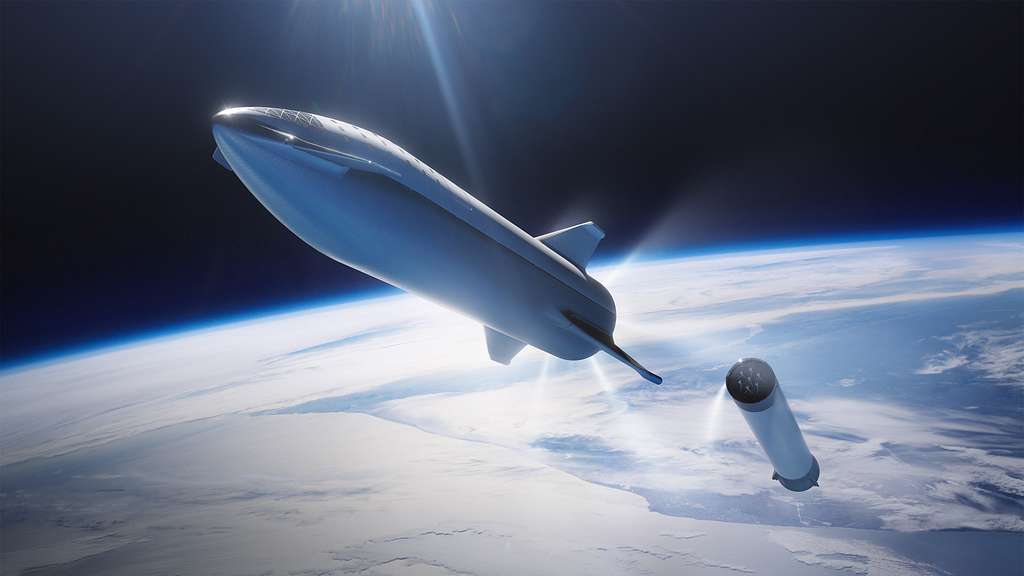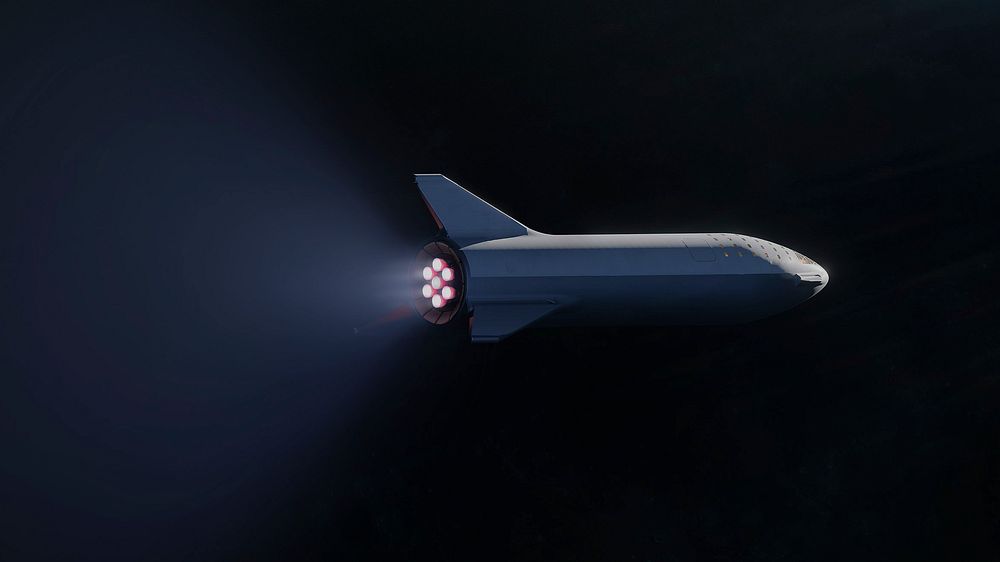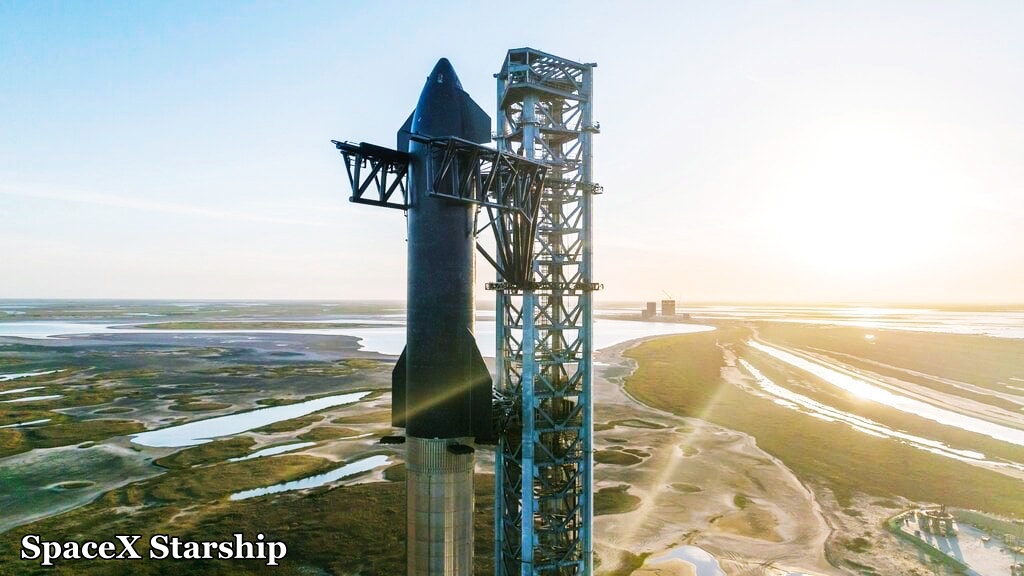The SpaceX Starship Flight 9 mission, set to follow the recent Flight 8, is facing a challenging road ahead. After a series of setbacks and the failure of two previous second-stage Starships, this mission is poised to test SpaceX’s resilience and ability to adapt to challenges.
As Flight 8 ended in unresolved issues, attention is now fully on Flight 9, which could face significant delays. Let’s take a deep dive into the factors at play and explore why Flight 9 may not launch on schedule.
The Path to Flight 9: A Series of Setbacks
A Minor Setback, But Progress is Key
Shortly after Starship Flight 8’s failure, Elon Musk took to Twitter to offer an optimistic view of the situation. In his tweet, Musk mentioned that the explosion of Ship 34 was a “minor setback” and that “progress is measured by time.” He estimated that Flight 9 could be ready in four to six weeks. If Musk’s prediction holds, Flight 9 could potentially launch as early as April 2025, or by mid-April at the latest.
However, the real question lies in whether SpaceX can overcome the hurdles from Flight 8 and stay on schedule. SpaceX has a history of pushing the boundaries of what is possible, but Flight 9 faces obstacles that could delay its launch beyond the expected timeline.

Immediate Challenges: FAA Investigation
One of the primary challenges SpaceX faces in Flight 9’s timeline is the ongoing FAA investigation into the explosion of Ship 34 during Flight 8 on March 6, 2025. The FAA triggered a mishap investigation after the vehicle broke apart midair and fell into the ocean. Historically, such investigations have delayed subsequent launches.
In fact, after Flight 7’s failure on January 16, 2025, it took the FAA nearly 50 days to issue a launch license for Flight 8. If the FAA follows a similar timeline for Flight 8’s mishap probe, Flight 9’s schedule could face significant delays. This could mean that the necessary approvals may not arrive until late April or even early May, which would push the timeline well past the four-to-six-week estimate from Musk.
Technical Readiness: Another Wild Card
The second significant factor delaying Flight 9 is technical readiness. For this mission, SpaceX will likely use Ship 35, paired with either Booster 14 or Booster 16. While Booster 16 has completed cryogenic testing, it will need to undergo engine installation and a static fire test before it can be ready for launch.
Meanwhile, Ship 35 has already undergone three cryo-proof tests but still requires additional work, especially after the issues that arose with Ship 34 during Flight 8. Specifically, the Block 2 ship design, which is intended to survive re-entry, still requires fixes due to the loss of Ship 34.
The timeline mentioned by Musk—four to six weeks—suggests that SpaceX is actively addressing engine or feed line issues discovered during Flight 8. However, this timeline could be stretched further if unexpected setbacks occur during static fires or stacking operations.

What Does Flight 9 Entail?
The Mission Profile: A Repeat of Key Objectives
The primary goal of Flight 9 will be to repeat some of the tests attempted during Flight 7 and Flight 8. This includes booster recovery, as well as ensuring that Starship successfully reaches orbit, a target it has failed to meet consistently. Musk has even hinted at ambitious goals, such as the catching of the ship midair using Mechazilla arms, but back-to-back upper stage losses might cause SpaceX to scale back its objectives in favor of increasing reliability.
SpaceX is also likely to focus on payload deployment, in-orbit engine relight, re-entry with an improved heat shield, and engine protection. However, each added test objective means more preparation time, which could delay the timeline into May 2025.
SpaceX’s Biggest Advantage: Experience
Despite the challenges, SpaceX’s biggest advantage is its experience. Many of the issues seen in Flight 8 were recurring problems from Flight 7—such as engine leaks, onboard fires, and control failures—which led to the vehicle’s loss. However, SpaceX is not starting from scratch. Instead, the team is refining fixes that were already put in place after Flight 7.
This means that Flight 9’s investigation will likely proceed more quickly than the previous ones, and the necessary improvements can be applied more efficiently. The hardware for Flight 9 is already undergoing rigorous testing. For instance, Booster 16 has completed cryogenic testing and will return to the production site for further work, while Ship 35 has finished three successful cryo-proof tests.
Parallel Testing to Accelerate Timelines
Another advantage SpaceX has is the ability to work on different components simultaneously. Since Starship’s test schedule is not entirely dependent on the launch pad, various components like engines and heat shields can be tested in parallel, ensuring that Flight 9 can be prepared more efficiently.
The launch pad itself has also undergone rapid refurbishments after Flight 8, and it is unlikely that delays will come from this aspect of the mission.
Could SpaceX Meet the April Timeline?
Given SpaceX’s rapid turnaround times and their ability to skip full integration testing as they did for Flight 8, it is not out of the question that Flight 9 could still launch within the four to six-week timeframe. Musk’s aggressive timelines have often proven accurate in the past, and SpaceX may indeed surprise us with a timely launch.
If Flight 9 launches on schedule, it will mark a significant milestone in the development of Starship and SpaceX’s pursuit of fully reusable spaceflight.

The Road Ahead: More Challenges to Overcome
Re-entry and Heat Shield Development
One of the biggest challenges that Flight 9 faces is re-entry. Unlike the Super Heavy booster, which has a relatively straightforward descent through the Earth’s atmosphere, Starship must endure intense aerodynamic forces and searing temperatures upon re-entry. To survive, SpaceX is working on improving the heat shield system, which is crucial for Starship’s re-entry process.
The issues faced by Ship 29 during Flight 4 revealed vulnerabilities in the current heat shield design, which prompted SpaceX to explore advanced ablative materials capable of withstanding higher temperatures. These enhancements are expected to be rolled out in Starship V2.
The Flap Mechanism and Engine Performance
Another critical system under review is the flap mechanism, which plays an essential role in Starship’s descent. V2 flaps mark a significant improvement over the earlier V1 flaps, but they still need to be rigorously tested to ensure their functionality during the descent and landing phase.
Furthermore, the Raptor engines that power Starship must demonstrate reliability during every phase of the mission. Engine failure, as seen during Flight 7, could endanger the entire mission. SpaceX is working to improve the Raptor engines to ensure they can withstand the intense stresses of spaceflight and landing.
Ground Infrastructure: Tower B and Mechazilla Arms
The ground infrastructure also plays a crucial role in the success of Flight 9. All eyes are on Tower B, which will be responsible for catching Starship midair using Mechazilla arms. The tower has already undergone significant construction, with the chopsticks—the arms that will catch Starship—being installed.
However, this ambitious midair catch will require flawless coordination between the tower’s components, including the landing pins, guide rails, and actuators. The communication network must also be robust to ensure that real-time data flows smoothly between the spacecraft and the ground crew.
Conclusion: Can SpaceX Overcome the Odds?
Despite all the challenges, SpaceX continues to push forward, determined to make Flight 9 a success. If everything goes according to plan, Flight 9 will set the stage for future milestones, including the historic mechazilla catch. While Flight 9 may face delays, SpaceX’s determination and experience put them in a strong position to overcome the hurdles in their path.
The road to Flight 9 and beyond is filled with challenges, but SpaceX’s commitment to innovation and persistence will likely continue to push them toward success. The future of space exploration is in their hands, and Flight 9 could be the next monumental step toward realizing the dream of fully reusable spacecraft.
Frequently Asked Questions (FAQs)
| Question | Answer |
|---|---|
| When is Starship Flight 9 expected to launch? | SpaceX is aiming for a mid-April 2025 launch, but FAA investigations and technical readiness could delay it. |
| What caused the delay in Flight 9’s timeline? | FAA investigation, technical setbacks, and issues with Ship 34’s loss have contributed to the delays in Flight 9’s schedule. |
| What improvements are being made for Flight 9? | Improvements include engine fixes, heat shield upgrades, and flap mechanism tests to improve the spacecraft’s reliability. |
| How critical is the Mechazilla catch for Starship? | Mechazilla catch is crucial for demonstrating Starship’s reusability and will be a key milestone in the mission’s future. |
Also Read:-
- Elon Musk revealed Starship V3 Design Completed, Launching Once a week in 2026
- Musk says xAI has acquired X in $33 billion stock deal
- The END of Human Jobs? Elon Musk Reveals 3 New Tesla Bot Gen 3 Tasks
- Cybertruck BANNED Worldwide on Roads! Elon Musk’s in Shock
- 3 Incredible Features of Elon Musk’s Tesla Tiny House Priced Under $6,789 for 2025
- Elon Musk’s Under $179 Tesla Smart Watch: 2025 SHOCKING Price & Production
- Tesla reveals Cybercab battery pack and range efficiency


1 thought on “SpaceX Starship Flight 9 is in BIG Trouble, No Launch This Month”